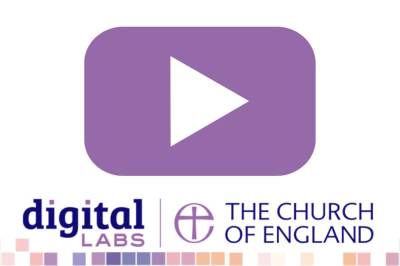09/11/2018

- Remember who you are writing the content for
It’s important to think about the different audiences you will be speaking to on your social media channels, A Church Near You page or your website. While we keep our tone consistent, you will be writing differently for your different audiences. The more specific the content is to the audience you are writing for, the more engaged they will be. Don't forget about the three audiences you've selected as your primary focus.
- Think about the words you are using
There are many words very specific to our work in the church that non-Christians may not understand. Words such as benefice, mission, pastoral, incumbent and lay are words we use often and it’s easy to assume everyone else knows what they mean. When people don’t understand the text they’re reading on a website, they're likely to leave.
- Keep it simple
The average reading age of the UK is 9 years old. This doesn’t mean we dumb down our writing and talk down to people. Instead, we write in simple, easy to understand language in short sentences and paragraphs. When we keep the writing simple, we are being inclusive and welcoming of everyone.
- Review your content regularly
It’s easy for writing to become stale and irrelevant over time, especially on web pages you don’t need to update often, such as contact details. If the text on a page stays the same for years, people have no reason to revisit the page. By reviewing your content and re-writing out of date pages, you’ll keep your website fresh and interesting. It also gives you a chance to make sure the text is simple and written for the right audiences.
- Prioritise your content
The most important information should be the first thing people read, so consider the order of what you need to tell people. The less important it is, the further down it should go. If you’re writing an explainer about your church, what is the first thing you want people to know about you?
- Use call to actions
Once people have arrived at the bottom of a webpage, what do you want them to do next? By giving them a call to action you’re encouraging them to take a next step. It could be as simple as visiting another page on the site that is relevant to them or it could be coming to a service. It’s important that you encourage action from the people that visit your site.
- Know how people read web pages
People don’t really read web pages – not all of it anyway. People tend to skim pages in an F shaped pattern (Reading across the top line, dropping down the page, reading across the page again, and so on). To make it easier for people to find the content they’re looking for, it’s okay to break the text up into short titled sections and use bullet points.
- White space and pictures are encouraged
Don’t try and fill up a page with text as it can be overwhelming. White space (any blank space on a webpage, not necessarily white) can help direct people’s eyes to what you want them to see. Pictures can help break up blocks of text and may help to communicate what you’re trying to tell people. A picture tells a thousand words.
- Don’t forget about mobile
Many people will be visiting your site on their mobile phone and the percentage of people who visit websites on their phone continues to increase. Have you checked what it looks like on your phone? Large blocks of text can be hard to read on a small screen and busy screens can also make it hard to consume the content. Consider what the site visitor will see first before they start to scroll.
- Ask other people to read your content
Once you have written your content for web or for social, it’s a good idea to get someone outside of the church to read when you’ve written. Do they understand it? Are there any words they don’t know? Are they engaged and interested in it? Their feedback will help you to ensure you are writing effectively.
Tallie Proud
Keep up to date with all things digital and join our Labs Latest newsletter


